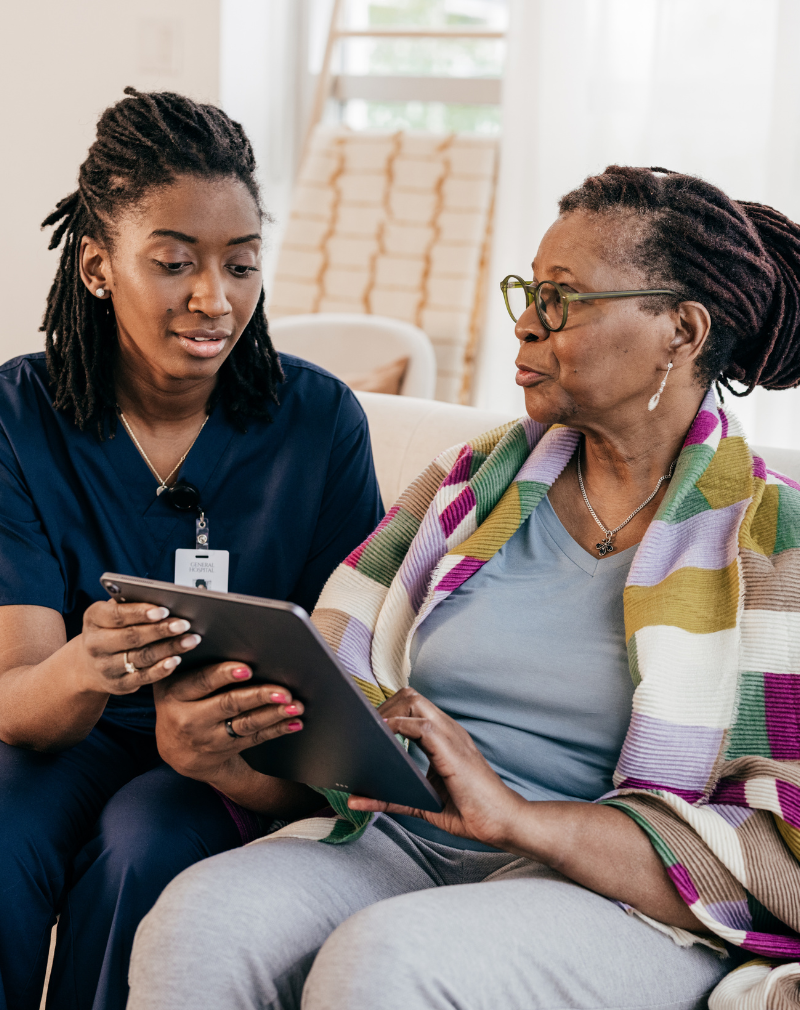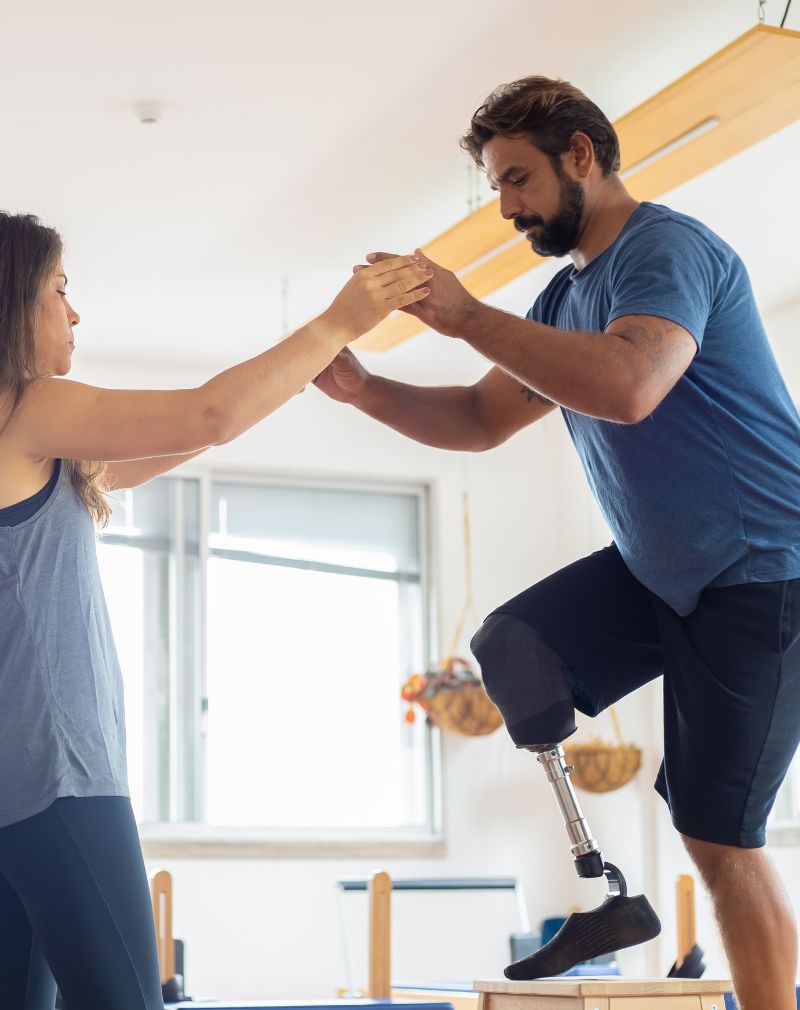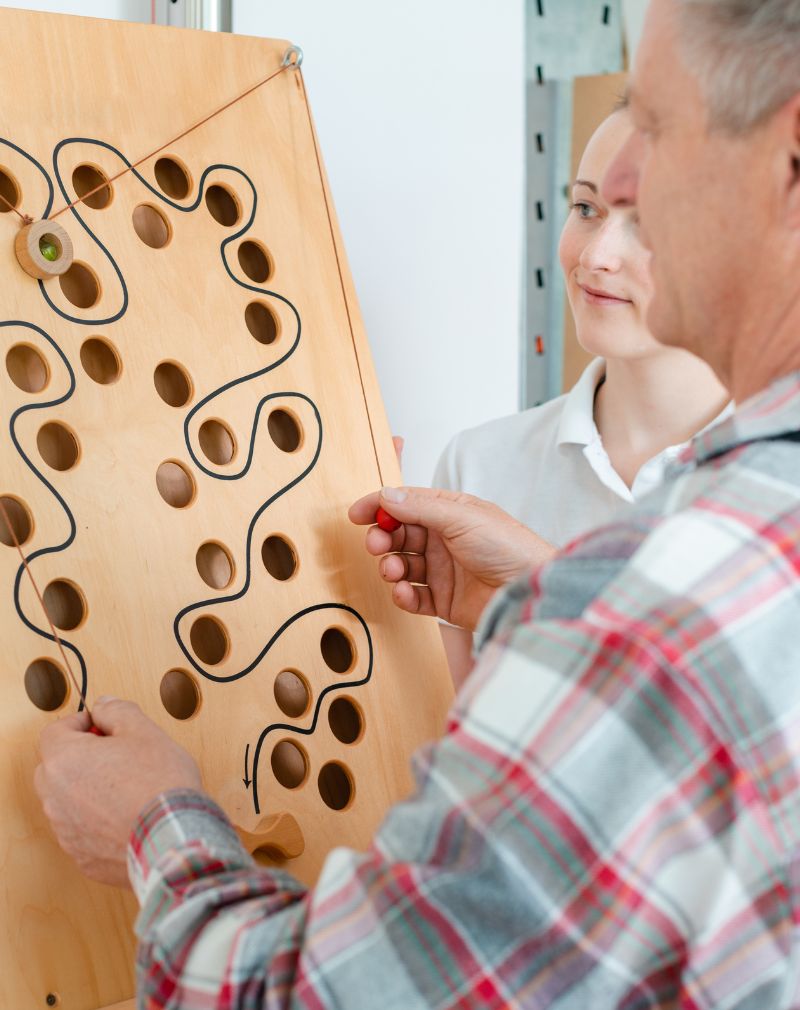He used to love fixing things. Every day after work, he’d tinker with appliances in the garage, rewiring lamps, mending chairs, tightening screws on shelves no one else noticed.
Now, even lifting a mug feels different. The ache in his shoulder doesn’t go away, and neither does the stiffness in his hands. But it’s not just the pain. It’s the quiet frustration of not being able to do what once felt so natural.
Stories like his aren’t rare. In fact, the World Health Organization estimates that as of early 2025, one in five people worldwide face daily limitations caused by their physical environment or work history. That’s not just a statistic. It’s a reality reshaping how we understand recovery and function.
At The American Wellness Center in Dubai Healthcare City, our Occupational Therapy Department starts here: by listening. We assess not only the pain, but the spaces you move through and the roles you’ve carried for years. Because what you’ve done, and where you’ve done it, matters more than people realize.
Whether it’s the chair you sat in for decades or the tools you once held daily, these everyday details form the map of your recovery. We just help read it.
What Is Occupational History and Environment Assessment?
It’s easy to overlook how much your body remembers.
The worn-down mat in the kitchen, the way your shoulder lifts just slightly higher to reach for a cupboard, the slope of your chair at work. Over time, those small patterns shape how your body feels—and how it functions.
An occupational history and environment assessment is a structured way to study these patterns.
It looks at the jobs you’ve done, the roles you play at home, the way your day is organized, and the places you move through. It isn’t just about the pain in your wrist or your back—it’s about everything around that pain too.
This kind of evaluation helps therapists understand what’s helping you heal and what’s quietly holding you back.
It shows us how your tasks, routines, and settings affect your physical strength, coordination, mental focus, and even your emotional energy.
At The American Wellness Center in Dubai Healthcare City, the Occupational Therapy team doesn’t rely on checklists alone.
We observe. We ask the right questions. And when needed, we step into your world—whether that’s your home office, your kitchen, or your child’s classroom—to see what your routine doesn’t say out loud.
Why It Matters: Real-World Relevance
A man sits at a desk for ten hours a day.
His shoulder pain gets worse, but the real issue isn’t his body—it’s the height of the monitor and how his chair doesn’t swivel. The fix isn’t more medication. It’s changing the setup.
A mother spends years lifting toddlers and groceries with her dominant hand.
She never notices how much her back leans to one side, until that lean turns into a persistent ache.
A child can’t sit still in class.
The diagnosis says sensory issues, but it’s the fluorescent lights and scratchy uniform tag that tip him into overload. Change the lights. Change the outcome.
These aren’t just clinical puzzles. They’re stories we hear every week.
And they all remind us that healing rarely happens in isolation. Our routines and environments play a powerful role in how well we recover—or don’t.
The assessment helps uncover barriers hiding in plain sight.
Sometimes, it’s posture. Sometimes, it’s workflow. Sometimes, it’s the simple act of walking barefoot on tiles that are always just a bit too cold.
At AWC, we use these insights to build not just a therapy plan—but a strategy for living better in your real world, not just in a clinic room.
The Data: What the Research Says (2024–2025)
We’ve always known the environment matters. Now, the data is catching up.
In 2024, a sweeping meta-analysis published in The Lancet Public Health confirmed it:
Environmental mismatch is one of the top three modifiable barriers to functional independence in rehabilitation.
That means a poorly arranged home, an ill-fitted workstation, or even a chaotic morning routine can slow recovery more than the injury itself.
More recently, a January 2025 report in the Journal of Occupational Therapy International showed that tailored environmental interventions led to a 32% improvement in therapy outcomes for adults with neurological conditions.
Closer to home, the UAE’s 2024 national health data revealed something even more urgent:
A 40% rise in workplace-related musculoskeletal issues, especially among expatriate workers in sedentary or high-repetition jobs.
This isn’t just a trend. It’s a call to reassess how we treat pain and function.
At The American Wellness Center in Dubai Healthcare City, our Occupational Therapy team uses these findings as fuel.
We don’t just treat symptoms. We study where they come from—and where you live, work, and move matters just as much as what shows up on your scan.
The Process at AWC: What to Expect
We begin with conversation, not just charts.
The assessment starts with a structured interview. You’ll talk through your daily habits, previous jobs, past injuries, and the parts of your routine that now feel heavier than they used to.
From there, we observe.
In our clinic or sometimes in your actual space, we look at how you move, sit, reach, bend, or even rest. We don’t just see the pain—we see the context around it.
You’re not alone in this process.
We involve families, caregivers, even employers when needed. Because your world isn’t isolated, and neither is your healing.
Our occupational therapists also use proven tools to deepen the assessment:
- Sensory Profile Assessments: To understand how your body reacts to sounds, textures, lights, and more.
- Functional Independence Measures (FIM): To track your current level of function in daily activities.
- Ergonomic Evaluations: To adjust your home or work setup in ways that reduce strain and support recovery.
Each tool adds a layer of understanding. Together, they shape a treatment plan that actually fits you.
Who Benefits Most from These Assessments?
This isn’t just for one group of people.
Our Occupational History and Environment Assessments are valuable for a wide range of individuals at different stages of life:
- Stroke or injury survivors working to regain strength and return to work safely.
- Children with developmental delays, where even a classroom desk can impact learning and focus.
- Adults with chronic conditions, like arthritis, postural issues, or neurological challenges that affect how they move and feel.
- Older adults seeking to maintain independence and avoid home-related injuries.
If your body feels like it’s working harder just to keep up with life, you’re likely someone who could benefit.
AWC’s Unique Edge: Personalized and Contextual Care
What makes the difference at The American Wellness Center in Dubai Healthcare City isn’t just our tools or our techniques—it’s our perspective.
We don’t stop at symptoms.
We go into your routines, environments, and goals to help reduce injury risk, support independence, and make day-to-day life more livable again.
Our approach goes beyond therapy room walls.
We work with your family, your employer, your child’s school—whoever needs to be involved to make real, sustainable progress happen.
Because healing doesn’t only happen on a table.
It happens when you’re able to move more freely at work, stay steady while caring for your child, or simply get through a day without needing to pause for pain.
When Healing Needs a Starting Point
Sometimes, getting better doesn’t begin with a diagnosis.
It starts with a question: How has your life shaped your body?
At The American Wellness Center in Dubai Healthcare City, we take that question seriously.
Our Occupational Therapy Department isn’t just about exercises or routines. It’s about looking at where you’ve been and using that insight to help you move forward with more comfort, clarity, and strength.
If you’re tired of one-size-fits-all advice, if you feel like your daily struggles are being missed or misunderstood, this is where the conversation begins.
You don’t have to keep guessing what’s holding you back.
Let’s find out together—and build a path toward freedom in your everyday movements.



